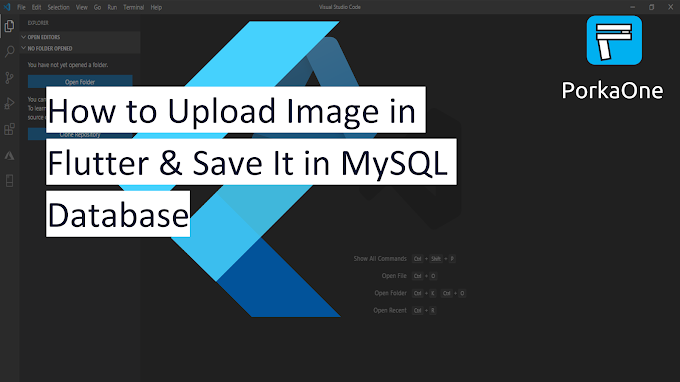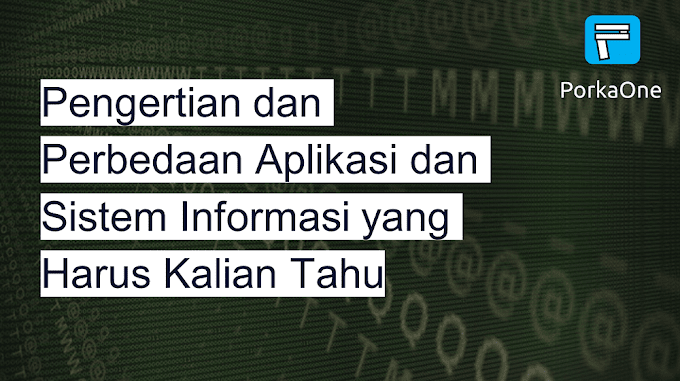Hello everyone, welcome back at porkaone. On this occasion we will learn how to retrieve and display data from the internet in Flutter. If you're curious, let's read in full below.
In our tutorial this time we will learn several things in flutter
How to Fetch and Display Data in Flutter
1. First, create a new flutter project by pressing CTRL + SHIFT + P simultaneously. Then select new project → Application → select the project storage location → then fill in the project name.
2. Create a new file in the lib folder with the name product.dart. Then copy the script below.
class Product {
final int id;
final String title;
final double price;
final double discountPercentage;
final double rating;
final int stock;
final String brand;
final String category;
final String thumbnail;
Product({
required this.id,
required this.title,
required this.price,
required this.discountPercentage,
required this.rating,
required this.stock,
required this.brand,
required this.category,
required this.thumbnail,
});
factory Product.fromJson(Map<String, dynamic> json) {
return Product(
id: json['id'],
title: json['title'],
price: json['price'].toDouble(),
discountPercentage: json['discountPercentage'].toDouble(),
rating: json['rating'].toDouble(),
stock: json['stock'],
brand: json['brand'],
category: json['category'],
thumbnail: json['thumbnail'],
);
}
}3. Open the main.dart file in the lib folder then replace it with the script below. I have included an explanation in the script
import 'package:flutter/material.dart';
import 'dart:convert';
import 'package:http/http.dart' as http;
import 'product.dart';
void main() {
runApp(MaterialApp(
home: MyApp(),
));
}
class MyApp extends StatelessWidget {
Future<List<Product>> fetchProducts() async {
final response = await http.get(Uri.parse('https://dummyjson.com/products'));
// Make an HTTP GET request to the given URL
if (response.statusCode == 200) {
// Check whether the response was successful with status code 200 (OK)
final List<dynamic> productsJson = json.decode(response.body)['products'];
// Gets a JSON array from the response body and converts it to a list of Product objects
return productsJson.map((json) => Product.fromJson(json)).toList();
} else {
// If the response is unsuccessful, throw an Exception with an error message
throw Exception('Failed to load products');
}
}
@override
Widget build(BuildContext context) {
return Scaffold(
appBar: AppBar(
title: Text('Product Page'),
),
body: FutureBuilder<List<Product>>(
future: fetchProducts(),
builder: (context, snapshot) {
// Check snapshot status
if (snapshot.hasData) {
// If data is available, we get a list of products from the snapshot
final List<Product> products = snapshot.data!;
// Build a GridView to display products
return GridView.builder(
gridDelegate: SliverGridDelegateWithFixedCrossAxisCount(
crossAxisCount: 2,
childAspectRatio: 0.6,
),
itemCount: products.length,
itemBuilder: (context, index) {
// Get the product at the specified index
final product = products[index];
// Returns a Card widget containing product information
return Card(
child: Column(
crossAxisAlignment: CrossAxisAlignment.stretch,
children: [
// show product thumbnail with Image.network
Container(
height: 150,
width: MediaQuery.of(context).size.width,
child: Image.network(
product.thumbnail,
fit: BoxFit.cover,
),
),
// show data like title, category, brand, price, and rating
Padding(
padding: const EdgeInsets.all(8.0),
child: Column(
crossAxisAlignment: CrossAxisAlignment.start,
children: [
Text(
product.title,
style: TextStyle(
fontSize: 16,
fontWeight: FontWeight.bold,
),
),
SizedBox(height: 4),
Text(
product.category,
style: TextStyle(
fontSize: 8,
fontWeight: FontWeight.bold,
),
),
SizedBox(height: 4),
Text(
product.brand,
style: TextStyle(
fontSize: 8,
fontWeight: FontWeight.bold,
),
),
SizedBox(height: 4),
Row(
mainAxisAlignment: MainAxisAlignment.spaceBetween,
children: [
Text(
'\$${product.price.toStringAsFixed(2)}',
style: TextStyle(
fontSize: 14,
fontWeight: FontWeight.bold,
color: Colors.green,
),
),
Text(
'Rating: '+product.rating.toStringAsFixed(2),
style: TextStyle(
fontSize: 10,
fontWeight: FontWeight.bold,
),
),
],
),
],
),
),
],
),
);
},
);
} else if (snapshot.hasError) {
// If an error occurs, displays an error message in the center of the screen
return Center(
child: Text("${snapshot.error}"),
);
}
// If it is still in the process of loading data, display the loading indicator in the middle of the screen
return Center(
child: CircularProgressIndicator(),
);
},
),
);
}
}Ok, now run your project in the emulator. If successful, the display will look like the image below. There are images, product titles, product categories, brands, prices and product ratings.

|
| Final Result |
Now you have learned several functions, packages and features in Flutter. You can develop this exercise further so that your flutter application is better. You can add an MVC model or use state management. Also read several articles related to flutter that I have prepared below.
| Read Another Article ✨ |
| 📰 1. How to Display a Website in Flutter with Webview read more |
| 📰 2. How to Make a Bubble Bottom Bar in Flutter read more |
|
📰 3. How to Install Java Development Kit and Add Variable Path to
ENV read more |
|
📰 4. How to Make Copy Feature in Flutter Apps read more |
That's it for our flutter tutorial this time about how to display data from the internet in flutter. Hopefully this article is useful. If you have any questions, please ask directly in the comments column below. That's all and receive a salary.







0 Comments
Come on ask us and let's discuss together
Emoji